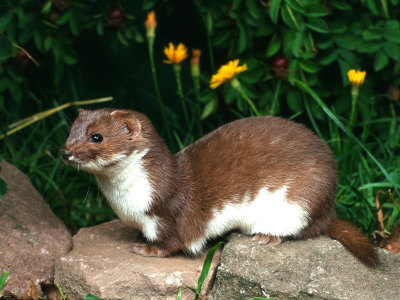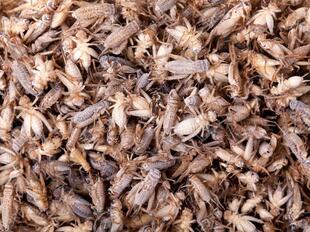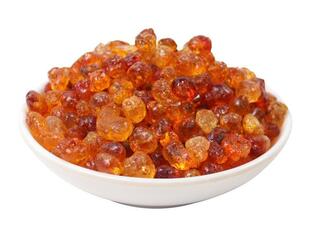
Weasel(Mustela nivalis)
Phylum —chordata
Class — mammalia
Order — carnivora
Family — mustelidae
Genus – mustela
Appearance
The weasel has a thin, greatly elongated and extremely flexible body with a small, yet elongated, blunt-muzzled head which is no thicker than the neck. The eyes are small in relation to their head size and are bulging and dark colored. The legs and tail are relatively short, the latter constituting less than half the body length. The feet have sharp, dark-coloured claws, and the soles are heavily haired. There are usually four pairs of nipples but these are only visible in females. Fat is deposited along the spine, kidneys, gut mesentries and around the limbs.
Average body length in males is 130 to 260 mm (5 to 10 in), while females average 114 to 204 mm (4.5 to 8.0 in). The tail measures 12 to 87 mm (0.5 to 3.4 in) in males and 17 to 60 mm (0.7 to 2.4 in) in females. Males weigh 36 to 250 g (1.3 to 8.8 oz), while females weigh 29 to 117 g (1.0 to 4.1 oz).
The winter fur is dense, but short and closely fitting. In northern subspecies, the fur is soft and silky, but coarse in southern forms. The summer fur is very short, sparser and rougher. The upper parts in the summer fur are dark, but vary geographically from dark-tawny or dark-chocolate to light pale tawny or sandy. The lower parts, including the lower jaw and inner sides of the legs, are white. There is often a brown spot at the corner of the mouth. The dividing line between the dark upper and light lower parts is usually straight but sometimes forms an irregular line. The tail is brown, and sometimes the tip is a little darker but it is never black. In the northern part of its range and at high altitudes, the weasel changes colour in the winter, the coat becoming pure white and exhibiting a few black hairs in rare circumstances.
Habitat
This weasel has a Holarctic circumboreal distribution, including much of North Africa and Europe, Asia and regions of northern North America.
Behavior
Except for the breeding season, weasels are solitary. They are territorial animals and form gender-based dominance hierarchies, with older males being dominant over juvenile males and females.
Least weasels need to eat very regularly so that they do not starve to death, and often they are found foraging at any time, day or night. They commonly use food caching, as they often kill prey bigger than themselves, but only consume a few grams of meat for each meal. Caches are hidden around the den entrance, and latrine sites are as well.
An individual scent-marks around a den site with secretions from its anal glands. When startled or cornered, these glands release a bad-smelling fluid that will deter an antagonist.
Weasels also sometimes perform a “weasel war dance”, consisting of a series of twists and leaps, often accompanied by noises like barks, an arched back, stiff limbs, and erection of their caudal and dorsal hairs. Weasels of any age perform the dance, though it is more common in the younger ones, especially kits when playing with their siblings.
Diet
Weasels are predominantly carnivores: they mostly eat small rodents like mice and voles but also eat birds, frogs, fish and eggs.
Reproduction
This species is polygynandrous, with males and females mating numerous times with many partners. Males defend territories, usually against other males, but in the breeding season they leave their territories to search of females. The breeding season is from March to June (though breeding can occur year-round).
Following gestation of 34 - 37 days, a litter of 4 - 6 kits is born. Young are weaned at 4 weeks old and at 8 weeks old they are able to hunt, often going with their mother and hunting in 'gangs’. They are independent when they are 9 - 12 weeks of age and reach sexual maturity when they are 3 - 4 months old.
The average lifespan for wild individuals is short; only 1 or 2 years, whereas the longest recorded captive lifespan is 10 years.
In captivity
Weasels are very well tamed. Thanks to their hyperactivity, they will amuse you from morning till evening.
The cage for a weaselmust have a very small distance between the bars (maximum 1 cm.), otherwise the weasel will run out of it.
Food for the weasels is the best balanced one for kittens. Once or twice a week, you must give a live or dead mouse, or chicken. You can give small pieces of a chicken.
Because of its small size, the weasel has a high metabolism (metabolic rate). That`s why weasels need to be fed frequently especially babies up to 2 weeks old - every hour. Animals of 3-8 weeks old must be fed every 3 hours. Adult weasels can be fed twice a day in the morning and in the evening.
 Russian
Russian
 English
English


















